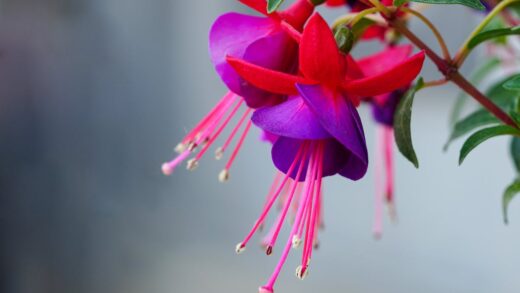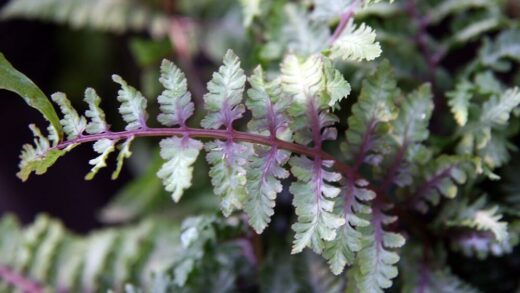Successfully guiding an aloe vera plant through the winter months is a critical aspect of its long-term care, especially in climates with cold temperatures and reduced daylight hours. As a succulent native to warm, arid regions, aloe vera is not adapted to withstand frost or prolonged periods of cold, damp conditions. The primary goal of wintering is to provide a safe, stable environment that allows the plant to enter a natural state of dormancy, conserving its energy until the favorable growing conditions of spring return. This process involves adjusting key elements of its care routine, particularly watering, feeding, and light exposure.
For aloe vera plants that spend the summer outdoors, the transition to an indoor winter environment must be managed carefully to avoid shocking the plant. This involves bringing them inside well before the first frost is expected. For plants that live indoors year-round, winter care still requires significant adjustments. The reduction in the intensity and duration of natural light, combined with cooler indoor temperatures, signals the plant to slow down its metabolic processes significantly.
During this dormant period, the plant’s need for water and nutrients decreases dramatically. The most common mistake during winter is continuing with a summer watering schedule, which inevitably leads to waterlogged soil and a high risk of root rot. Recognizing and respecting this natural slowdown is the essence of proper winter care. It is a time for maintenance and protection, not for encouraging active growth.
By understanding the concept of dormancy and making the necessary changes to your care regimen, you can ensure your aloe vera not only survives the winter but emerges in the spring healthy, rested, and ready for a new season of growth. This proactive approach will prevent common winter problems like etiolation and decay, preserving the beauty and health of your plant.
Understanding dormancy in aloe vera
Dormancy is a natural and essential part of the life cycle for many plants, including aloe vera. It is a period of rest, characterized by a significant slowdown in growth, metabolism, and energy consumption. This state is triggered by environmental cues, primarily the decrease in light intensity, shorter daylight hours, and cooler temperatures that are typical of winter. It is a survival mechanism that allows the plant to conserve its resources when conditions are not favorable for active growth.
During dormancy, your aloe vera will appear to stop growing. You will not see the emergence of new leaves from the center of the plant, and its overall size will remain static. This is completely normal and should not be a cause for concern. The plant is not sick or dying; it is simply in a state of suspended animation, waiting for the return of stronger light and warmer temperatures to resume its growth.
The plant’s requirements for water and nutrients are drastically reduced during this period. Because it is not actively photosynthesizing or producing new tissue at a significant rate, its uptake of water from the soil slows to a minimum. Similarly, it has no use for the nutrients provided by fertilizer. Understanding this physiological shift is fundamental to adjusting your care routine appropriately for the winter months.
It is important to facilitate this dormancy rather than fight it. Trying to force growth during the winter by providing extra water, fertilizer, or artificial heat can stress the plant and make it more susceptible to diseases. By allowing the plant to follow its natural cycle of rest, you are helping to ensure its long-term health and vigor. A proper dormant period allows the plant to consolidate its energy, leading to stronger growth when spring arrives.
Bringing outdoor plants inside
If your aloe vera has been enjoying the summer outdoors, it is crucial to bring it inside before the first frost of the season. Aloe vera is not frost-tolerant, and even a brief exposure to freezing temperatures can cause irreversible damage to its water-filled leaves, turning them into a blackened, mushy mess. As a general rule, plan to move your plant indoors when nighttime temperatures consistently begin to drop below 10 degrees Celsius.
Before bringing the plant inside, take the opportunity to inspect it thoroughly for any pests that it may have picked up outdoors. Check the undersides of leaves, the base of the plant, and the soil surface for common culprits like mealybugs, scale, spiders, or ants. Treating any infestations while the plant is still outside is much easier than dealing with them once they have been introduced to your indoor plant collection. A gentle spray with an insecticidal soap can be a good preventative measure.
The transition from the bright, airy conditions of the outdoors to the lower light and more static environment of the indoors can be a shock to the plant. To ease this transition, it is helpful to acclimatize it gradually over a week or two if possible. Start by moving the pot to a shadier location outdoors for a few days, and then perhaps to a covered porch or entryway before finally bringing it into its designated indoor spot. This helps the plant adjust to the lower light levels more slowly.
Once inside, choose the brightest possible location for your aloe vera. A south-facing window is often the best option during the winter months, as the sun is lower in the sky and less intense, reducing the risk of sunburn while maximizing the available light. If you do not have a location with sufficient natural light, you may need to supplement with a grow light to prevent the plant from becoming weak and leggy.
Adjusting care for winter
The most significant change you must make to your aloe vera care routine in winter is to drastically reduce watering. Because the plant is dormant and the soil dries out much more slowly in cooler, lower-light conditions, the risk of overwatering and root rot is at its highest. You must shift from watering when the soil is dry to watering only when the plant shows the very first subtle signs of thirst, such as leaves that are slightly less plump. This might mean watering as infrequently as once every month or even every six to eight weeks.
It is absolutely essential to cease all fertilization during the winter. As the plant is in a dormant state, it cannot utilize any added nutrients. Fertilizing during this time is not only wasteful but also harmful, as the unused mineral salts will build up in the soil and can damage the inactive root system. You should stop feeding your plant in the early autumn and not resume until you see clear signs of new growth in the spring.
While the plant needs as much light as possible, keep it away from cold drafts. A spot near a window is great for light, but if the window is poorly sealed, the cold air can stress or even damage the plant. Likewise, avoid placing it near heat sources like radiators or vents. The dry, hot air can desiccate the leaves, and the temperature fluctuations are not ideal for a plant in dormancy. A stable, cool, and bright location is the perfect winter home.
Throughout the winter, continue to monitor your plant for any signs of trouble. Keep an eye out for pests that may have come in from outdoors and watch for any signs of rot, such as a soft stem base or yellowing leaves. A light dusting of the leaves every so often can help maximize light absorption by keeping the plant’s pores, or stomata, clear. These simple adjustments will see your plant safely through to the spring.
Common winter problems
One of the most common problems for aloe vera during the winter is etiolation, or stretching. This occurs when the plant is not receiving enough light and begins to stretch out in search of a brighter source. The new growth will be pale, weak, and elongated, and the plant will lose its compact, rosette shape. The best way to prevent this is to provide as much direct light as possible, ideally from a south-facing window, or to use a supplemental grow light for several hours each day.
Root rot remains the number one threat during the winter months. The combination of reduced water uptake by the dormant plant and slower evaporation from the soil creates a perfect storm for this fungal disease. It is easy to misjudge the soil’s moisture level, as the top layer may feel dry while the bottom remains saturated. Always check the soil deep in the pot before even considering watering, and remember that it is always safer to underwater than to overwater during this period.
Pests can sometimes become a more noticeable problem indoors during the winter. The dry air from central heating can create an environment that is favorable for pests like spider mites. Pests that were brought in from outdoors, such as mealybugs, may also begin to multiply in the protected indoor environment. Regular inspections are key to catching these problems early before they become full-blown infestations that can spread to your other houseplants.
Finally, a sudden dropping or yellowing of the lower leaves can occur, which can be alarming. This can be caused by a variety of winter stresses, including the shock of being moved indoors, cold drafts, or a single instance of overwatering. While losing a few lower leaves is not necessarily a disaster, it is a clear signal from the plant that its conditions are not ideal. Re-evaluate its location, your watering habits, and its proximity to cold or hot drafts to diagnose and correct the underlying issue.

















